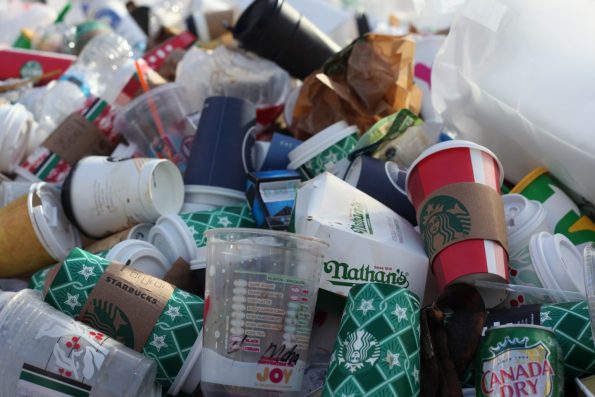Solid waste is a general term used to describe a variety of discarded materials, while the component referred to as refuse has the highest risk of environmental contamination. Refuse contains both solid wastes of household garbage and commercial rubbish by the residents and merchants of a community. If left unattended to, refuse can pose a serious threat to community health, both as a direct source of human illness and as an attractant to disease-carrying organisms.
Hence, most Canadian communities retrieve refuse from its source and deliver it to a waste-disposal site. Smaller communities are rampant in Canada, unfortunately, many smaller towns and villages cannot afford the services of a refuse collector or a proper waste-disposal site.
In most provinces in Canada, garbage dump is not allowed. Most of the time, these wastes are burnt, which causes fire hazards. This method threatens the life of users of the site, fields close by, forest and buildings, which in turn, results in severe damage to life and property yearly.
Wastes in Ontario are either disposed into:
-
Landfills
Landfills are created to store waste, but not decompose them. They are made up of layers lined with clay and covered in a flexible plastic coat. Drains and pipes interlace each layer to retrieve the hazardous fluid formed by garbage. As the layer fills up, it is covered with another piece of plastic and topped with soil and plants. The process of waste decomposing in a landfill is slow thus making the process less hazardous.
-
Recycling Facilities and Composters
About 35% of solid wastes in Ontario are either recycled or composted. The aim of recycling and composting is to be able to reuse waste by converting them into new products. Recycling and composting facilities focus on processing plastics, papers, glasses, and aluminums. While composters, on the other hand, uses food and agricultural waste to form compost for municipal and consumer use.
Waste management and recycling in Ontario concerns the two major areas where wastes are generated, which are:
-
Residential
The residential waste management and recycling services are authorized by the provincial government, though they are executed by the local municipalities. Every municipality creates its waste management program which could include;
- Depot drop-off
- Pay-as-you-throw
Ensure that any program you are using complies with the requirements of the Environmental Protection Act.
-
Industrial, Commercial and Institutional sectors (IC&I)
As for the IC&I sector, they are solely responsible for complying with waste-related regulations. Their conformity is determined by the size of their waste. IC&I businesses that are producers of product and/or packaging are obligated to take physical and/or financial responsibility for the waste their products and/or packaging generates.
Ontario is currently using the Made-in-Ontario Environment plan. This program is dedicated to:
- Protecting the environment
- Reducing litters and waste in communities
- Encouraging economic growth and development
- Driving innovation, performance, and competitiveness
The Made-in-Ontario Environment plan is targeting making residents and producers responsible for the waste they generate from their homes, products, and packaging. There are several diversion programs in Ontario set aside to reuse, recycle and safely dispose of waste. They are:
-
Tire Collection Network
This is a recent regulatory structure establish to make tire producers responsible for creating an accessible, suitable and free tire collection point across the province.
-
Electrical and Electronic Waste Program
This program is into recycling or reuse of electronic equipment like computers, televisions, and radios.
-
Ontario Deposit Return Program
This program collects beverage and alcohol containers for recycling.
-
Blue Box Program
This program recycles printed papers and packaging such as plastics, papers, glasses, aluminums, steels, etc.
-
Municipal Hazardous Program
In this program, hazardous wastes such as batteries, antifreeze, paint, fertilizers, etc. are either disposed of or recycled. If you are a carrier or retriever of hazardous waste or liquid industrial waste, you must get an approval from the Ministry of Environment, Conservation and parks stating the exact conditions of your operations, including wastes you are authorized to carry or retrieve safely.
Waste classes are integrated into approval for waste carriers or retrievers to categorize the waste streams they are authorized to handle or manage. Currently, in Ontario, 53 waste classes are categorized by a three-digit number.
Each number is linked to a generic waste description that is used to categorize the type of waste being retrieved. Wastes that are not converted to recycling or composting are sent to the Green Lane Landfill site close to London, Ontario. The site can collect waste for about 20-25 years.












